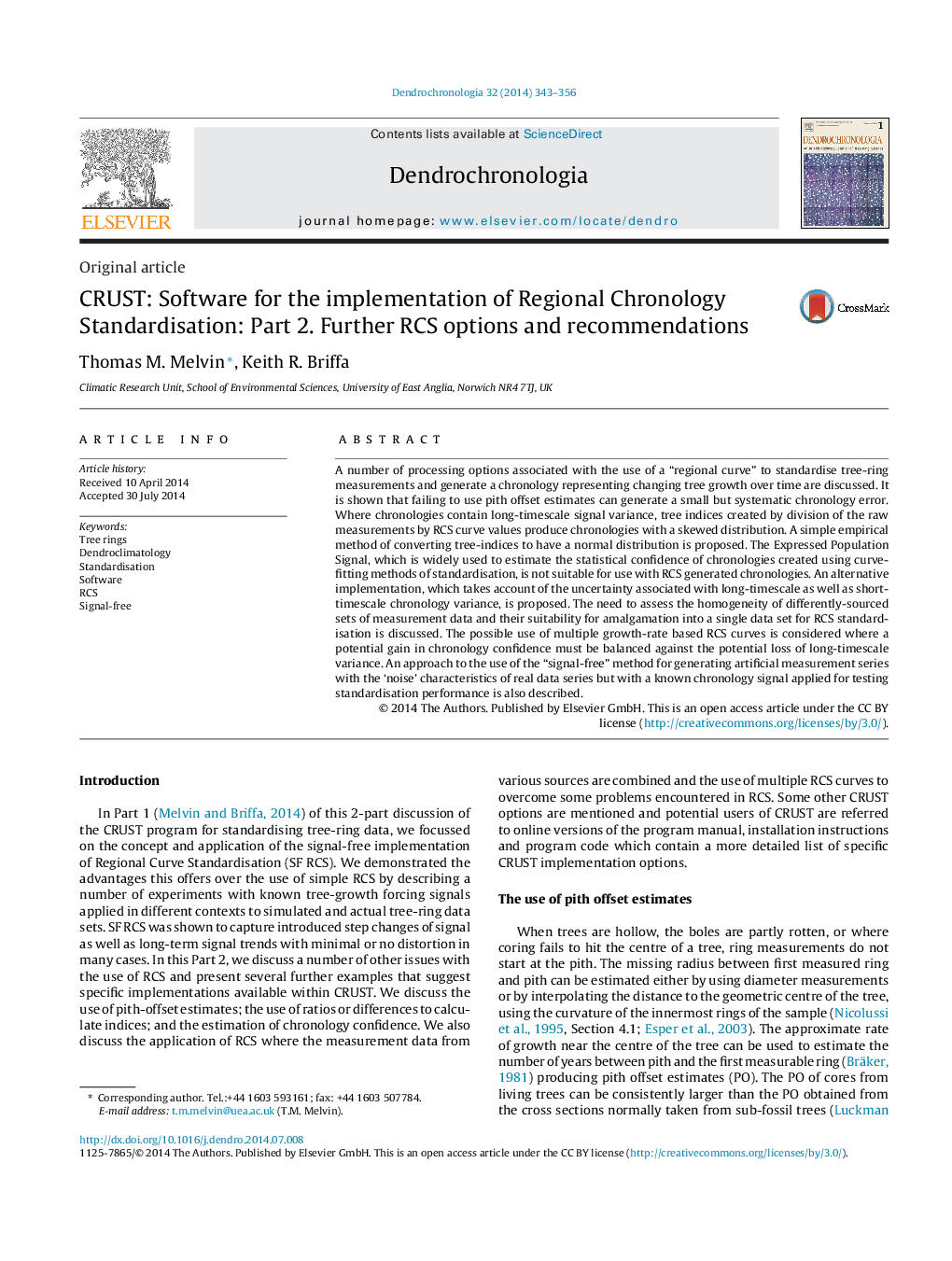| Article ID | Journal | Published Year | Pages | File Type |
|---|---|---|---|---|
| 10250248 | Dendrochronologia | 2014 | 14 Pages |
Abstract
A number of processing options associated with the use of a “regional curve” to standardise tree-ring measurements and generate a chronology representing changing tree growth over time are discussed. It is shown that failing to use pith offset estimates can generate a small but systematic chronology error. Where chronologies contain long-timescale signal variance, tree indices created by division of the raw measurements by RCS curve values produce chronologies with a skewed distribution. A simple empirical method of converting tree-indices to have a normal distribution is proposed. The Expressed Population Signal, which is widely used to estimate the statistical confidence of chronologies created using curve-fitting methods of standardisation, is not suitable for use with RCS generated chronologies. An alternative implementation, which takes account of the uncertainty associated with long-timescale as well as short-timescale chronology variance, is proposed. The need to assess the homogeneity of differently-sourced sets of measurement data and their suitability for amalgamation into a single data set for RCS standardisation is discussed. The possible use of multiple growth-rate based RCS curves is considered where a potential gain in chronology confidence must be balanced against the potential loss of long-timescale variance. An approach to the use of the “signal-free” method for generating artificial measurement series with the 'noise' characteristics of real data series but with a known chronology signal applied for testing standardisation performance is also described.
Related Topics
Physical Sciences and Engineering
Earth and Planetary Sciences
Atmospheric Science
Authors
Thomas M. Melvin, Keith R. Briffa,
